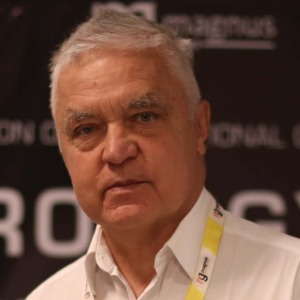Botulinum Neurotoxin
Botulinum neurotoxin, commonly referred to as Botox, is a highly toxic neurotoxin produced by the bacterium Clostridium botulinum. It is most commonly used in medical and cosmetic procedures to temporarily relax muscles that are causing wrinkles in the face and neck. In addition to these aesthetics treatments, botulinum neurotoxin has also shown promise in treating certain physical ailments such as muscle spasms, stiff or weak muscles, migraine headaches, excessive sweating, and various forms of chronic pain. The neurotoxin blocks the release of acetylcholine, a neurotransmitter responsible for stimulating muscles, by binding to specific receptors on the nerve cells. This results in muscle paralysis, often leading to a reduction in the severity of wrinkles present on the face and neck. In the medical field, botulinum neurotoxin has been used to treat conditions such as dystonia, cerebral palsy, and spasticity. In treating medical ailments, the concentrated amounts of botulinum toxin can cause paralysis, allowing the body to repair and heal damaged muscles, without the need for invasive surgeries. In addition to aesthetics and medical treatments, botulinum neurotoxin has also been utilized to treat certain neurological diseases. Critically ill patients with certain types of brain injuries can benefit from the injection of botulinum toxin as it helps to reduce spasticity and other types of movements that can worsen the patient’s condition. Due to its toxicity, botulinum neurotoxin is regulated in numerous countries and the drug is typically supplied in specific vials for medical use. Therefore, it is important to reiterate that Botox should only be administered by licensed and experienced medical professionals. In addition to the potential side effects of the drug, misuse of botulinum toxin carries the risk of releasing toxins in the body’s nervous system, leading to irreversible neurological damage. As a result, it is essential to be aware of the risks and benefits associated with the use of botulinum neurotoxin.

Ken Ware
NeuroPhysics Therapy Institute, Australia
Robert B Slocum
University of Kentucky HealthCare, United States
Yong Xiao Wang
Albany Medical College, United States
W S El Masri
Keele University, United Kingdom
Jaqueline Tuppen
COGS Club, United Kingdom
Milton Cesar Rodrigues Medeiros
Hospital Santa Casa de Arapongas, Brazil




Title : Perception and individuality in patient cases identifying the ongoing evolution of Myalgic Encephalomyelitis/Chronic Fatigue Syndrome (ME/CFS)
Ken Ware, NeuroPhysics Therapy Institute, Australia
Title : Narrative medicine: A communication therapy for the communication disorder of Functional Seizures (FS) [also known as Psychogenic Non-Epileptic Seizures (PNES)]
Robert B Slocum, University of Kentucky HealthCare, United States
Title : Personalized and Precision Medicine (PPM), as a unique healthcare model through biodesign-driven biotech and biopharma, translational applications, and neurology-related biomarketing to secure human healthcare and biosafety
Sergey Victorovich Suchkov, N.D. Zelinskii Institute for Organic Chemistry of the Russian Academy of Sciences, Russian Federation
Title : Neuro sensorium
Luiz Moutinho, University of Suffolk, United Kingdom
Title : Traumatic Spinal Cord Injuries (tSCI) - Are the radiologically based “advances” in the management of the injured spine evidence-based?
W S El Masri, Keele University, United Kingdom
Title : Scalp acupuncture with functional electrical stimulation for the treatment children with autism spectrum disorder
Zhenhuan Liu, Guangzhou University of Chinese Medicine, China